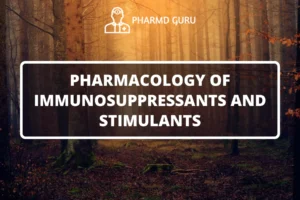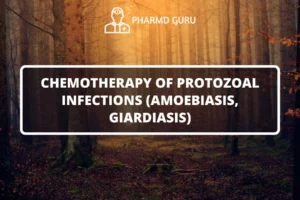Anticoagulants are a class of drugs that play a crucial role in the prevention and treatment of blood clotting disorders. These medications act on the blood coagulation cascade to inhibit the formation of blood clots. In this article, we will explore the pharmacology of anticoagulants, including their mechanisms of action, clinical applications, and potential side effects.
SCROLL DOWN TO THE BOTTOM OF THIS PAGE FOR ACTUAL NOTES.
Mechanisms of Action
Anticoagulants exert their effects by targeting specific components of the blood coagulation cascade. There are two main categories of anticoagulants:
- Heparins: Heparins, including unfractionated heparin and low molecular weight heparins (LMWHs), work by enhancing the activity of antithrombin III, a natural anticoagulant protein. Antithrombin III inhibits several clotting factors, such as thrombin and factor Xa, thereby preventing the formation of blood clots.
- Oral Anticoagulants: Oral anticoagulants, such as warfarin and direct oral anticoagulants (DOACs), interfere with the synthesis or activity of clotting factors. Warfarin inhibits the synthesis of vitamin K-dependent clotting factors, while DOACs directly target specific clotting factors, such as factor Xa or thrombin.
Clinical Applications
Anticoagulants have a wide range of clinical applications in the prevention and treatment of various thromboembolic disorders, including:
- Venous Thromboembolism: Anticoagulants are commonly used to prevent deep vein thrombosis (DVT) and pulmonary embolism (PE) in high-risk individuals, such as those undergoing major surgery or with a history of thromboembolic events.
- Atrial Fibrillation: Patients with atrial fibrillation, a common cardiac arrhythmia, are at an increased risk of stroke due to blood clot formation in the atria. Anticoagulants are used to reduce this risk by preventing clot formation.
- Mechanical Heart Valves: People with mechanical heart valves are prone to clot formation on the valve surfaces. Anticoagulant therapy is essential to prevent valve thrombosis and related complications.
- Deep Vein Thrombosis and Pulmonary Embolism: Anticoagulants are the mainstay of treatment for DVT and PE, helping to prevent further clot growth, reduce the risk of complications, and promote the dissolution of existing clots.
Side Effects and Monitoring
Although anticoagulants are highly effective in preventing and treating clotting disorders, they carry a risk of bleeding complications. The main concern with anticoagulant therapy is achieving a delicate balance between preventing clot formation and avoiding excessive bleeding. Regular monitoring of coagulation parameters, such as prothrombin time (PT) or international normalized ratio (INR), is necessary to ensure that the anticoagulant dose is appropriate.
Additionally, certain anticoagulants, such as heparins, may cause a decrease in platelet count, a condition known as heparin-induced thrombocytopenia. This requires careful monitoring and management by healthcare professionals.
ACTUAL NOTES:




